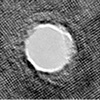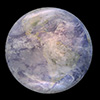Jun 21, 2023 (Nanowerk News) A research team led by Dr. Ji-Hoon Lee of the Department of Hydrogen Energy Material at the Korea Institute of Materials Science (KIMS) developed a three-dimensional porous carbon-based current collector material and applied it to secondary batteries and supercapacitors to improve energy density and lifespan...
Nanopore fabrication with swift heavy ions
Jun 21, 2023 (Nanowerk News) Scientists from the Institute of Modern Physics (IMP) of the Chinese Academy of Sciences (CAS), in collaboration with the Joint Institute for Nuclear Research, Russia, have recently introduced a novel method for fabricating nanopores smaller than 10 nm in WO3 nanosheets. This pioneering research has...
Terahertz wave camera can capture 3D images of microscopic world
Jun 21, 2023 (Nanowerk News) Loughborough University scientists are the first to demonstrate that a terahertz wave camera can capture 3D images of microscopic items hidden inside small objects. Lead researcher Dr Luana Olivieri says though the research is in the early stages, the team's latest study – primarily funded...
Engineers ‘strike gold’ with innovation that recovers heavy metals from biosolids
Jun 21, 2023 (Nanowerk News) Engineers in Melbourne have developed a cost-effective and environmentally friendly way to remove heavy metals, including copper and zinc, from biosolids. The team’s work, led by RMIT University in collaboration with South East Water and Manipal University in India, advances other methods for heavy-metal removal...
Exoplanet may reveal secrets about the edge of habitability
Jun 21, 2023 (Nanowerk News) How close can a rocky planet be to a star, and still sustain water and life? A recently discovered exoplanet may be key to solving that mystery, providing important insights about conditions at the inner edge of a star’s habitable zone and why Earth and...
Directly imaging quantum states in two-dimensional materials
Jun 21, 2023 (Nanowerk News) When some semiconductors absorb light, excitons (or particle pairs made of an electron bound to an electron hole) can form. Two-dimensional crystals of tungsten disulfide (WS2) have unique exciton states that are not found in other materials. However, these states are short lived and can...






